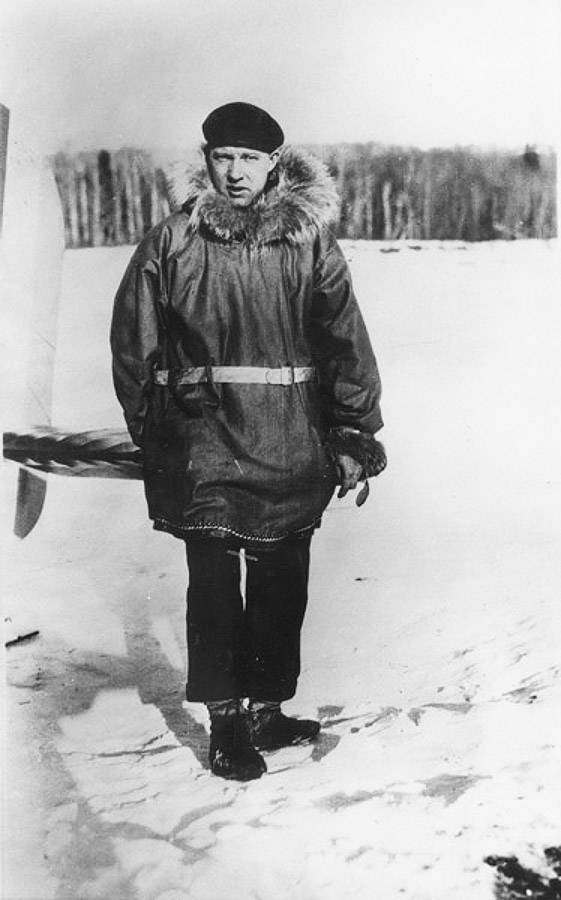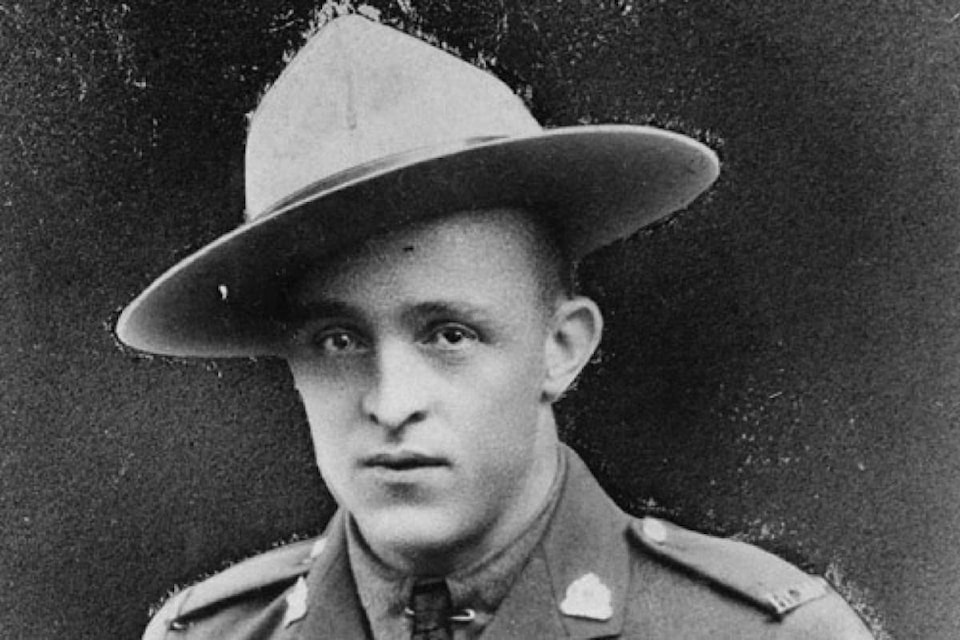In late December 1931, the RCMP detachment at Arctic Red River in the Northwest Territories was asked to speak with a man named Albert Johnson, who had arrived in the region earlier in the year and built an isolated cabin on the Rat River. Local First Nations trappers had complained that the man—about whom almost nothing was known—had been interfering with their traps, and there was a likelihood that he had not purchased a trapping licence.
A first visit to the cabin yielded nothing, as the man refused to speak. When Mounties returned with a warrant, Johnson shot and gravely wounded one of them. A third attempt to flush Johnson out of his cabin—this time with dynamite—was unsuccessful, and under cover of a blizzard the man disappeared into the wilderness.
Warnings were issued to people living in isolated cabins throughout the region, and many chose to seek safety in Aklavik. The search group, which departed on Jan. 16, 1932 was equipped with a two-way radio so that they could quickly communicate with headquarters; the first time a radio had been used for police communications.
For two weeks the searchers scoured the region, hampered by the bitter cold, blizzards, and the difficulty of getting supplies. However, a break came in late January, when police received a report of two shots fired near Bear River. Suspecting it might be Johnson hunting for food, an advance party of four men headed to the area and found tracks from Johnson’s distinctive snowshoes, which they followed to a natural barricade formed by trees and boulders. There were no tracks leading out.
The four men approached stealthily, but without warning Johnson opened fire, aiming a shot at Const. Edgar Millen, the man in charge of the Arctic Red River detachment and the only policeman to have met and spoken with Johnson. One of the other men, a trapper named Carl Gardlund, caught a brief glimpse of Johnson and fired, and the fugitive dropped out of sight.
The searchers opened fire, but there was no return of fire from Johnson. Aware of the man’s cunning, the party waited for two hours, but there was still no sign of life or movement. Deciding that the shot fired by Gardlund had either killed or incapacitated Johnson, the four men advanced, led by Millen.
They were within 25 yards of the site when Johnson leapt up. Three of the men scrambled for cover, but Millen stood his ground and got off three shots, none of which hit their target. Johnson got off two shots, and one of them hit Millen, who collapsed.
When the three other men peered out at the scene from where they had sought refuge they saw Millen lying motionless on the ground, and no sign of Johnson. Two of the men kept up a steady stream of cover fire while Gardlund, keeping low, approached the fallen officer. He tied Millen’s bootlaces together and dragged the Mountie to safety, but a quick examination showed that he was dead.
A third posse of men was sent out on Feb. 2 in search of Johnson, who had once again vanished, bringing to 17 the number of people tracking him. However, rather than fleeing the area, Johnson seemed to be playing games with his pursuers, who found themselves tracking parallel sets of prints of Johnson’s snowshoes. At one point two groups of searchers, following two sets of tracks, came face to face with each other, and realized Johnson had at some point put his snowshoes on backwards to confuse the people on his trail.
A plane had been requested to provide support with supplies, as well as aerial surveillance, and it arrived around Feb. 5, 1932. It was piloted by Capt. William “Wop” May, one of the original bush pilots who opened up the north and who was already a legend. He had joined the Royal Flying Corps during WW I and, during his first mission in 1918, was the pilot who lured German ace Manfred von Richthofen—the infamous “Red Baron”—into the crosshairs of another Canadian pilot, who shot the German pilot down.
May’s plane proved immediately useful, covering in minutes terrain that took men on foot days to search. May, assisted by an RCMP officer, was able to follow leads and eliminate false ones, as well as bring supplies to the searchers. Even with this support, however, the posse had frequent waits while load after load of supplies came in, giving Johnson ample time to stay ahead of them.
He seemed finally to have grown tired of playing games, for he appeared to be moving west toward the Barrier River Pass in the Richardson Mountains. Many believed the mountain range impassable in winter, but some of the veteran searchers—knowing what sort of man they were dealing with—did not rule out the possibility that Johnson had made his way through the mountains, even though a blizzard was raging.
On Feb. 12 an Indian from the west side of the Richardson Mountains mushed into the police camp to say that snowshoe tracks matching those of Johnson had indeed been spotted on the west side of the mountains. It meant that Johnson had, in a blizzard, covered 90 miles in three days over a mountain range that was said to be impossible to navigate in winter.
The police camp moved to the west side of the mountains. On Feb. 14, in just 15 minutes of flying time, May spotted Johnson’s tracks and saw that the man was headed due west. A party of searchers eventually made their way on foot to the Eagle River, and saw that Johnson was travelling on the frozen riverbed. Moreover, they realized his tracks were less than 24 hours old.
They also found evidence of places where Johnson had stopped to light small fires in the hollows of caves, so that the smoke would not give him away. Unable to use his rifle to shoot game, lest it give away his location, Johnson appeared to have been snaring squirrels for food.
On the morning of Feb. 17 a party of searchers set out to continue following Johnson’s tracks on the Eagle River, a meandering waterway with many loops. The men realized, from the freshness of the tracks, that they were close to Johnson, but they had no way of knowing how close they were to him, or to a dramatic end to their manhunt.
To be continued.
editorial@accjournal.ca
Like us on Facebook and follow us on Twitter

